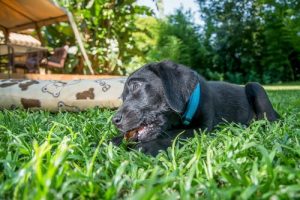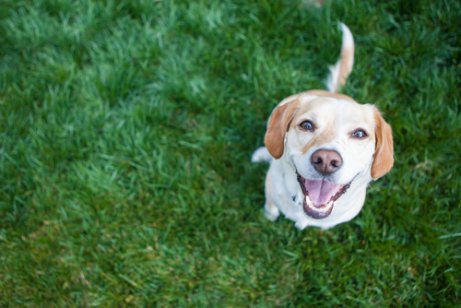The Risks Of Having Pets In Your Garden


Written and verified by the lawyer Francisco María García
The Risks of Having Pets in Your Garden
In general, people often associate gardens with flowers, trees, animals, and peace. However, there are also many hidden dangers in regard to allowing pets in your garden.
Although our animal companions love being outdoors, you need to take certain precautions in order for them to a safe place because garden can be a source of toxic and dangerous elements for pets.
Puppies and Their Impulsive Curiosity
All dogs can be impulsive and curious because they use their senses to explore every corner of their surroundings. However, puppies tend to be really curious as they get to know the world around them.
Even though puppy-hood is a beautiful stage of your pet’s life, their impulsiveness at this age can become a health risk. Puppies have a habit of chewing on everything and using their nose to explore all of their surroundings.
Although this is part of their growth, it’s important to pay close attention to them to prevent accidents. Just like small children, puppies are unaware of the dangers around them.
Considering that a garden is like an amusement park for their senses, and they have some dangers. In addition to coming into contact with numerous microorganisms, pets in your garden can also ingest toxic substances, such as poisonous plants or pesticides.

Although it depends on the personality of each animal (some are more curious than others), some dogs will have these impulsive traits throughout their entire lives. This is especially true of breeds that are more prone to chewing on things, like Golden Retrievers and Labradors.
Garden Elements to Keep Your Dog Away From
In general, inside our homes, owners are careful about keeping toxic products out of the reach of children and pets. However, they don’t always take time to do the same outside of their home.
Below is a list of dangerous outdoor elements that should be handled with extreme caution in your garden.
- Agrochemicals, insecticides, pesticides, poison traps, and any potentially poisonous chemical.
- Plants for snails or slugs that have metaldehyde.
- Citronella used to repel mosquitoes (candles, incense, spirals, etc.)
- Toxic or irritating plants for pets, such as vines, daffodils, azaleas, cactus, hydrangeas, castor, tulips, etc.
- Traps for flies or other insects that contain methomyl.
- Blue-green algae, which can develop in ornamental fountains.
- Products used to chemically treat swimming pools, lakes, or artificial water sources. These products should be stored in a safe place away from dogs and children.
- Soil with cocoa, usually located around plants to ward off possible predators.
- Poisonous animals, usually in more rural areas (snakes, scorpions, spiders, etc.) Treating against pests is necessary to avoid risks of pets in your garden.
- Ornaments or decorations that have small or breakable pieces that your pet may chew on.
- Sharp or rusty garden tools. Any tools left out in the garden injure your pet.

Tips for a Healthy Dog and a Safe Garden
- It is necessary to avoid planting poisonous or irritating pants. This way, you can considerably reduce the risk of poisoning your pet.
- Create an area for your pets in your garden: If you want to let your pets run freely outside without damaging the garden, you should create a space just for them.
- To offer them an ideal space, you can prepare this area with things that will be entertaining to pets, such as their favorite toys or even a small pool. Create a place where you and your pet can relax.
This text is provided for informational purposes only and does not replace consultation with a professional. If in doubt, consult your specialist.